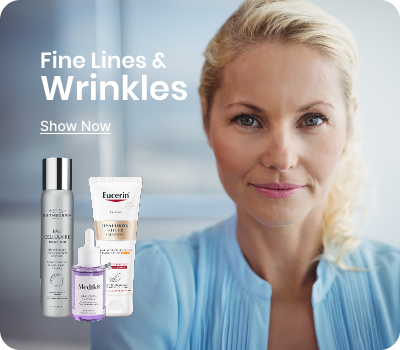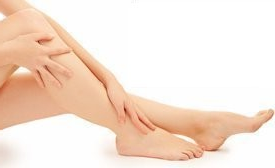
Face masks have become an essential part of contemporary skincare routines, offering benefits ranging from hydration and deep cleansing to anti-ageing effects. But are you using them correctly? To truly unlock their potential, it’s essential to understand the proper techniques and avoid common pitfalls. This comprehensive guide will teach you how to use face masks like a pro, ensuring you get the glowing, healthy skin you deserve.
Understanding the Different Types of Face Masks
The first step to mastering face masks is understanding the variety available and their specific benefits. Each type of mask is formulated to address particular skin needs, so choosing the right one for your skin type and concerns is essential for achieving the best results.
Sheet Masks: Your Ultimate Hydration Boost
Sheet masks are thin, fabric-like sheets infused with nutrient-rich serums designed to deliver a concentrated dose of hydration and treatment to the skin. They work well for all skin types but are particularly beneficial for dry or sensitive skin that craves moisture. The serum in these masks often contains ingredients like hyaluronic acid, aloe vera, and glycerin, which help to plump and soften the skin.
Clay Masks for Oily and Acne-Prone Skin
Clay masks are formulated with natural clays like kaolin, bentonite, or French green clay, known for their powerful ability to absorb excess oil and deeply cleanse the skin. These masks are ideal for those with oily or acne-prone skin, as they help draw out impurities, tighten pores, and reduce shine. Many clay masks are enriched with minerals that can help soothe inflammation and improve overall skin texture.
Gel Masks for Instant Hydration and Skin Relief
Gel masks are lightweight, transparent, and often cooling formulations that provide instant hydration and soothing relief to the skin. They are particularly effective for calming redness, irritation, or post-sun exposure discomfort, thanks to ingredients like aloe vera, cucumber extract, and chamomile. These masks are great for sensitive or reactive skin types, as they replenish moisture without causing heaviness or clogging pores.
The Power of Peel-Off Masks for Smoother, Brighter Skin
Peel-off masks are applied as a liquid or gel that dries to form a thin film on the skin. Once dry, the mask is peeled away, lifting off dead skin cells, dirt, and other impurities from the surface. These masks can help improve skin texture, refine pores, and brighten the complexion. However, they can be quite harsh if overused or applied to sensitive skin, potentially causing redness or irritation.
The Deep Nourishment of Cream Masks for Dry and Mature Skin
Cream masks are rich, creamy formulations packed with moisturising ingredients such as shea butter, oils, and ceramides. They are designed to deeply hydrate and nourish the skin, making them an excellent choice for dry, dehydrated, or mature skin types. Many cream masks also include anti-ageing ingredients like peptides, collagen, or retinol to help reduce the appearance of fine lines and improve skin elasticity.
Preparation Is Key: Pre-Mask Skincare Steps
To get the most out of your face mask, proper preparation is essential. Taking the time to ready your skin ensures that the mask’s active ingredients can penetrate effectively and deliver optimal results. Here’s a detailed guide to the pre-mask skincare steps:
- Cleanse Your Skin: Begin by washing your face with a gentle cleanser tailored to your skin type. This step removes dirt, oil, sweat, and makeup that may create a barrier on your skin. A clean surface ensures that the mask's active ingredients can reach deep into your pores. Use lukewarm water to avoid irritating the skin—hot water can strip your skin of natural oils, while cold water may not effectively remove impurities. Pat your skin dry with a soft towel, leaving it clean and ready for the next steps.
- Exfoliate (Optional): If your skin is not overly sensitive, consider exfoliating to remove dead skin cells and reveal a fresh layer of skin. This step helps enhance the absorption of the mask by unclogging pores and creating a smoother surface. Use a mild physical scrub or a chemical exfoliant containing alpha hydroxy acids (AHAs) or beta hydroxy acids (BHAs), depending on your preference and skin type. This step should only be done 1–2 times per week to avoid over-exfoliating.
- Use Steam: Steaming your face for a few minutes before applying a mask can significantly boost its effectiveness. The steam helps to open your pores, allowing the mask's ingredients to penetrate more deeply. To steam your face, fill a bowl with hot (not boiling) water, position your face a safe distance above it, and drape a towel over your head to trap the steam. Limit the session to 5–10 minutes to prevent over-drying your skin. If you’re short on time, a warm, damp wash cloth applied to your face for a minute or two can achieve a similar effect.
Application: Getting the Most Out of Your Face Mask
Applying your face mask correctly is crucial to maximizing its effectiveness and ensuring your skin benefits fully from the treatment. These tips will help you achieve the best results while avoiding common mistakes.
Maximise Your Mask: The Importance of Following Instructions
Before applying any mask, take a moment to carefully read the instructions provided by the manufacturer. Different masks are formulated with specific ingredients and have unique usage guidelines, such as recommended application time, frequency of use, and whether the mask should be rinsed off or peeled away. Adhering to these guidelines ensures you get the intended benefits while avoiding potential irritation or overuse. Pay attention to any precautions listed, especially if the mask contains potent active ingredients like retinol, AHAs, or BHAs.
Master the Art of Masking: Tips for Flawless Application
For a smooth and consistent application, use clean fingers or a dedicated mask brush. Brushes not only provide better control but also help keep the process hygienic. Spread an even layer of the mask across your face, ensuring all targeted areas are covered. Avoid applying the mask to the sensitive eye and lip areas unless it’s specifically formulated for these zones, as the skin in these regions is thinner and more prone to irritation. If you’re using a multi-masking approach (applying different masks to different areas based on your skin’s needs), take extra care to apply each mask type precisely.
Less is More: Why a Thin Layer is the Key to Masking Success
Applying a thick layer of a face mask might seem like it would enhance its effectiveness, but this is often counterproductive. A moderate, even layer is sufficient for most masks to work effectively. Using too much product can lead to waste, clogged pores, or difficulty in rinsing off the mask later. Focus instead on applying the right amount as indicated in the instructions—this ensures optimal contact with your skin and allows the mask to perform as intended.
Common Mistakes People Make When Using Face Masks
Even experienced skincare enthusiasts can fall into habits that undermine the effectiveness of their face masks. To get the most out of your mask while protecting your skin, it’s essential to be mindful of these common mistakes:
- Leaving the Mask on Too Long: It can be tempting to leave a mask on for longer than the recommended time, thinking it will enhance the benefits. However, this often does more harm than good. For instance, clay or charcoal masks left on too long can over-dry the skin, leading to irritation and discomfort. Similarly, hydrating masks may cause breakouts if left on excessively.
- Using Masks Too Frequently: Over-masking, or using face masks more often than recommended, can disrupt your skin’s natural barrier and lead to sensitivity, redness, or even breakouts. Each mask type has a suggested frequency of use, typically 1–3 times per week. Overusing exfoliating masks with active ingredients like acids or enzymes can strip the skin of its natural oils, while excessive use of hydrating masks may overwhelm the skin.
- Ignoring Skin Type: Not all masks are created equal, and using the wrong one for your skin type can cause more harm than good. For example, clay masks, known for their oil-absorbing properties, might be too drying for someone with already dry or sensitive skin. On the other hand, rich cream masks may clog pores for someone with oily or acne-prone skin.
- Skipping a Patch Test: Trying a new face mask without performing a patch test can be risky, especially if the product contains potent active ingredients or fragrances. A patch test helps identify potential allergic reactions or sensitivities before you apply the product to your entire face. To do a patch test, apply a small amount of the product to a discreet area, such as the inside of your wrist or behind your ear, and wait 24 hours to check for any adverse reactions like redness, itching, or irritation.
Expert Tips for Boosting the Effectiveness of Face Masks
To elevate your face mask routine and maximize its benefits, consider incorporating these expert-approved techniques:
- Layer with Serums or Toners: For masks that benefit from extra hydration or enhanced absorption, try applying a hydrating toner or lightweight serum to your skin beforehand. Ingredients like hyaluronic acid, glycerin, or niacinamide can create a moisture-rich base, allowing your mask to work more effectively. For example, applying a hydrating toner before a sheet mask can help lock in additional moisture, leaving your skin even more refreshed. Just ensure that the pre-mask product complements the mask's ingredients to avoid potential reactions.
- Multi-Masking: Multi-masking is a personalised approach that addresses different skin concerns simultaneously. Instead of applying the same mask to your entire face, use specific masks on targeted areas. For example, apply a clay mask to your T-zone (forehead, nose, and chin) to control oil and reduce pore size, while using a hydrating or soothing mask on your cheeks and under-eye areas to combat dryness or sensitivity.
- Incorporate Tools: Enhance your mask application and experience by incorporating skincare tools like jade rollers, gua sha stones, or silicone applicators. For sheet masks, use a jade roller or gua sha stone to gently massage the mask into your skin. This promotes better absorption of the serum while stimulating circulation, leaving your skin plump and glowing. For cream or gel masks, a silicone brush or applicator ensures an even application, minimising product waste and maintaining hygiene.
- Mask During Down Time: To make the most of your face mask, incorporate it into your self-care routine during moments of relaxation, such as while taking a warm bath. The steam from the bath can enhance the mask’s absorption by opening up your pores, allowing active ingredients to penetrate more deeply. This approach also creates a calming environment, helping to reduce stress while pampering your skin.
Post-Mask Care: What to Do After Removing Your Mask
The care you provide your skin after removing a face mask is just as crucial as the application itself. Proper post-mask steps help lock in the benefits, maintain hydration, and protect your skin from external factors.
Rinse Right: The Essential Steps for Removing Your Face Mask
If your mask requires rinsing, such as clay, peel-off, or exfoliating masks, it’s essential to do so thoroughly and gently. Use lukewarm water, as hot water can strip the skin of moisture and cause irritation, while cold water may not effectively remove the residue. Use soft, circular motions with your fingertips or a gentle cleansing sponge to ensure no product remains on your skin, which could lead to clogging or irritation. Pat your skin dry with a clean, soft towel instead of rubbing, as this minimises potential friction and redness.
Lock in the Glow: Hydrate and Seal After Masking
After removing your mask, your skin is in a receptive state, making it the perfect time to apply hydrating and nourishing products. Start with a lightweight hydrating serum or essence to replenish moisture, followed by a rich moisturiser or facial oil to seal in the benefits of the mask. Look for products containing ingredients like hyaluronic acid, ceramides, or antioxidants to enhance hydration and protect the skin barrier. For those with oily or combination skin, opt for a non-comedogenic moisturiser to avoid clogging pores.
Shield Your Skin: The Sunscreen Step You Can't Skip
If your mask contained exfoliating ingredients like AHAs, BHAs, or enzymes, your skin may be more sensitive to sunlight due to the removal of dead skin cells. To protect your fresh, renewed skin, apply a broad-spectrum sunscreen with at least SPF 30 before heading outdoors. Even if your mask didn’t contain exfoliants, it’s a good practice to finish your morning skincare routine with sunscreen, as UV exposure is one of the leading causes of premature ageing and skin damage. For night-time masking sessions, follow up with nourishing and restorative products instead.
Conclusion
Mastering the art of face masking is all about understanding your skin’s needs and using the right techniques to maximise the benefits of each mask. By selecting the appropriate mask for your skin type, following proper application methods, and avoiding common mistakes, you can ensure that your skincare routine delivers the radiant, healthy skin you desire. Remember, preparation, moderation, and post-mask care play vital roles in achieving the best results. With these expert tips and mindful habits, you can elevate your face mask routine to a whole new level, achieving glowing, refreshed skin every time.





